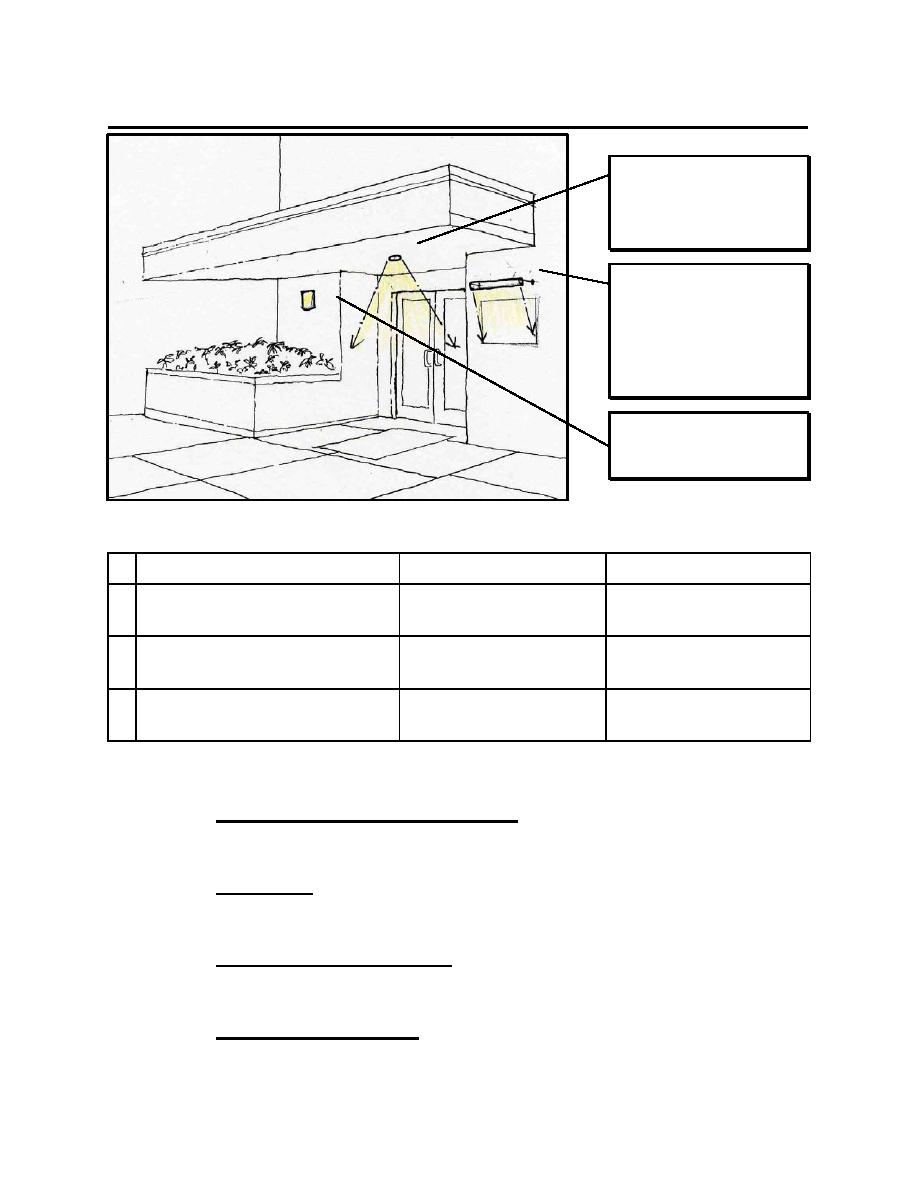
UFC 3-530-01
22 August 2006
BUILDING LIGHTING
Entrances
Recessed downlight
provides illuminance for
egress. Brightness at entry
aids in wayfinding and
identifies entry.
A
B
Wall mounted sign lighter
C
illuminates sign from
above, reducing light
pollution. Surface
brightness at entry aids in
wayfinding and identifies
entry.
Wall mounted sconce
provides surface
brightness.
EQUIPMENT RECOMMENDATIONS:
LUMINAIRE
LAMP
CONTROLS
Recessed compact fluorescent
Compact fluorescent lamp,
Control with photocell or
A
downlight.
3500K color temperature, 80
timeclock.
CRI+
Wall mounted linear fluorescent wall
Linear fluorescent lamps,
Control with photocell,
B
washer.
3500K color temperature, 75
timeclock, or occupancy
CRI+
sensor.
Wall mounted compact fluorescent
Compact fluorescent lamp,
Control with photocell or
C
sconce.
3500K color temperature, 80
timeclock.
CRI+
CRITICAL DESIGN ISSUES:
Appearance of Space and Luminaires: Carefully select luminaires to
match the aesthetic character of the building and contribute to a welcome
designation to the building entry.
Direct Glare: Because the surroundings may be very dark at night,
consider direct glare from luminaires and excessive contrast of surfaces.
Luminaires should use shielded, low wattage lamps.
Light Distribution on Surfaces: The lighting system should illuminate the
walkway uniformly to avoid dark patches. This uniformity is just as
important as the light level provided on the walking surface.
Light Pollution / Trespass: The use of fully shielded or full-cutoff
luminaires eliminates direct light above the horizontal plane. While all
lighting contributes to light pollution, direct light has the largest
7-7



 Previous Page
Previous Page
